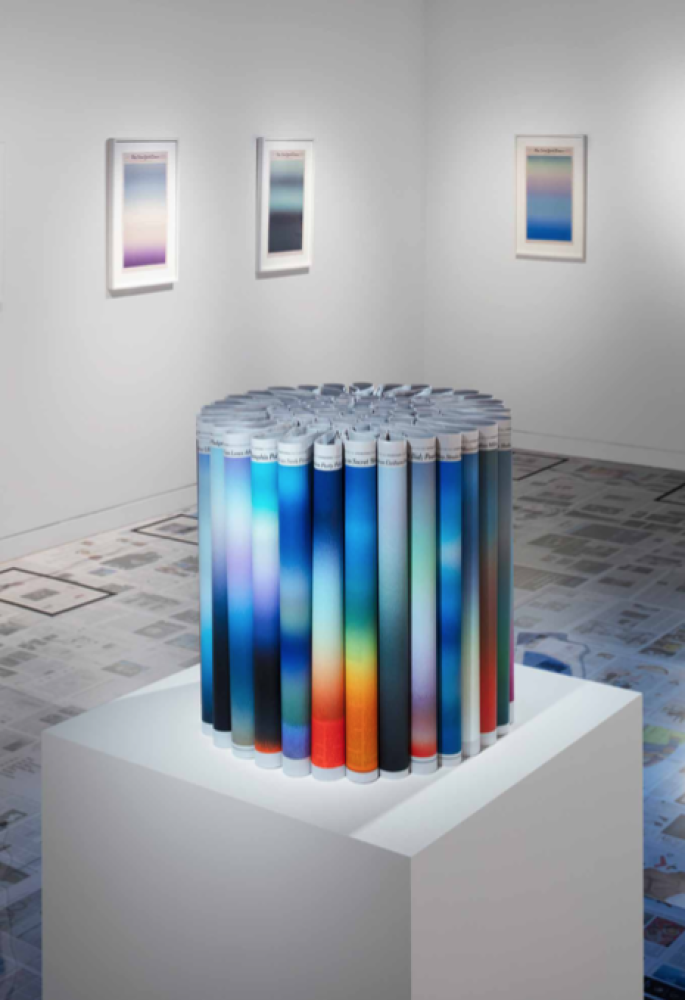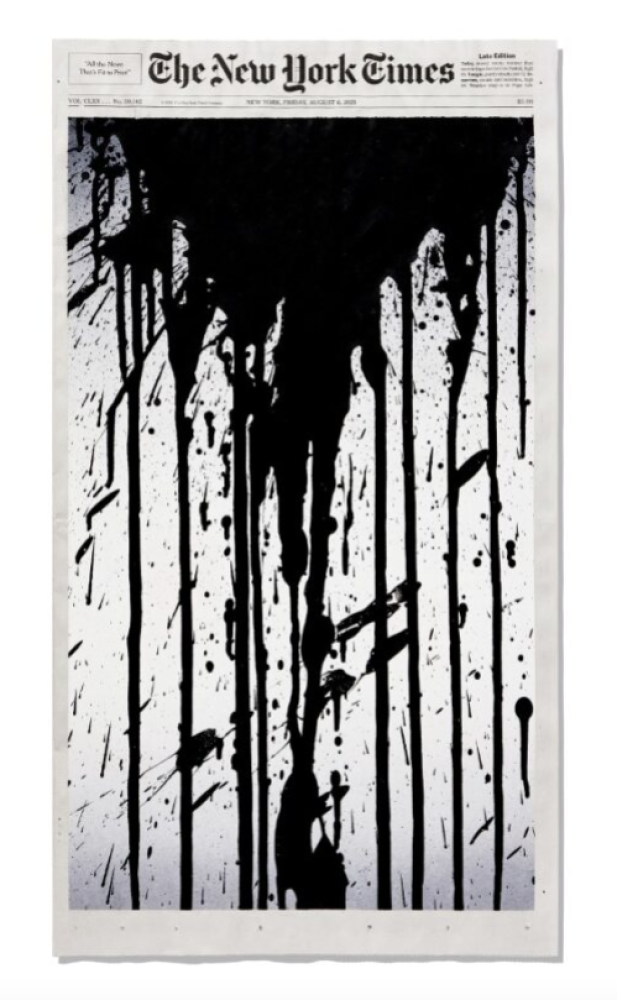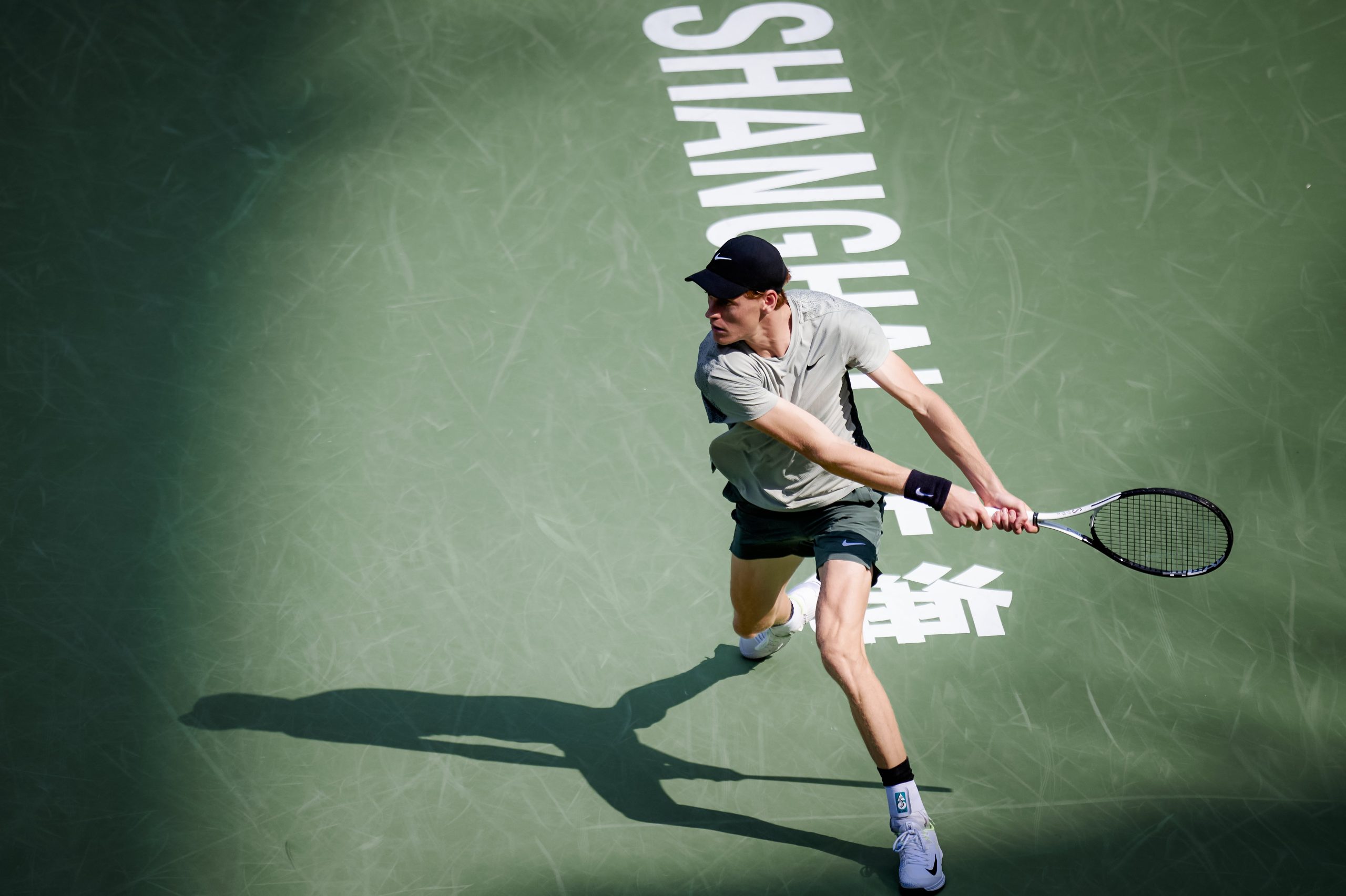Self-taught Japanese artist Sho Shibuya tells Dionne Bel how his signature painted covers of The New York Times have come to symbolise the turbulent era in which we live

Like clockwork, Sho Shibuya wakes up every day between 5 and 6am, reads The New York Times, and photographs the sunrise from his window or rooftop. Then he goes for a run, takes a cold shower and has breakfast with his wife before painting the morning’s sunrise on the newspaper’s front page. Concealing the print beneath a layer of acrylic paint, he finishes the piece with a deacidification spray to prevent the newspaper from yellowing. Depicting the constantly changing colour palette of the sky spanning pale to deep blue, pink-violet and intense orange, his daily ritual went on to become the series Sunrise from a Small Window documenting his life during the Covid-19 pandemic. Posted each day on Instagram, the artworks were an instant hit, providing a sense of relief, calm and inspiration not just for himself but also for thousands of viewers.
The series began in the early days of the pandemic in 2020. Although New York City was in lockdown, with lives disrupted and the streets deserted, time didn’t stand still but pursued its relentless cyclical course with day turning into night, as if nothing had changed. Viewing the outside world through the little window of his Brooklyn apartment, Shibuya had a eureka moment and decided to replace the tragic headlines of the daily newspaper that served as his canvas with the serenity and stillness of nature through his interpretations of the stunning sunrises each morning. They made him feel connected to the city and gave him a sense of community, as everyone shared a view of the same sky.

That morning sky quickly evolved into an abstract, prismatic reflection of Shibuya’s emotions on a given
day, whenever he was especially moved by a news story, which could be depicting fires, floods, hurricanes, man- made disasters, wars, shootings, election results, natural phenomena, significant global events or more light-hearted subjects. On occasion, he leaves the day’s headlines exposed for particularly poignant moments in history, such as the invasion of Ukraine or climate catastrophes. Each work is labelled with the date of its creation, building a visual timeline that, when viewed in hindsight, evokes memories and impressions of past events.
Describe your artistic language and philosophy. What is the most important consideration when you first start creating an artwork?
Do you know exactly how it will look when you start, or are you surprised by the end result? The most important thing is to capture the moment daily; I believe continuity matters, and the meaning of the paintings relies on that continuity and seeing the works together over time. The result is not always the same as expected. I think that’s the beauty of art, that what you set out to create might not be the thing you end up with.

Take us through the different steps of your creative and production process. Tell us about the sources of inspiration, techniques, equipment, materials and conceptual approaches of your artworks.
One of my essential approaches is to physically try whatever idea comes into my brain instead of pre- judging it before I make the effort. I’m an individual artist; I don’t have a big production. If I need a stainless steel sheet to depict an event, I take an Uber to Home Depot and see the material. If I need fake snow, I run to the toy store. Brooklyn is perfect because you can run to get material anywhere.
What role does the medium of painting play in your practice? When did you first start making art and how did you learn to paint?
Learning by doing has been my method since the beginning. After being inspired by On Kawara’s Today series in 2016, I went to Blick, the art supply store, and bought some enamel paints and brushes. Later, I started painting every day after work. Maybe I spent two to three hours daily. I still don’t know how to use a tool or paints properly – I’m always learning and making things up.

Tell us about the origins of your Sunrise from a Small Window series, the main idea behind it and why you use The New York Times as your canvas.
I was stuck in my small studio apartment in Brooklyn. Every day, absorbing the bad news, I wondered how I could adapt to this new normal without feeling overwhelmed. Some days passed and I realised that from the small windows of my studio, I couldn’t hear the sounds of honking cars or people shouting. I could hear the birds chirping energetically and the sound of wind in the trees, and I looked up and saw the bright sky, beautiful as ever despite the changed world beneath it.
I was intrigued by the contrast between the chaos in the world and stunning sunrises every day. I started to capture the moment in the newspaper, contrasting the anxiety of the news with the serenity of the sky, creating a record of my new normal. I selected The New York Times because it’s the newspaper I read every day, and because New York City is my home.
Also see: Year of the Dragon fashion accessories





